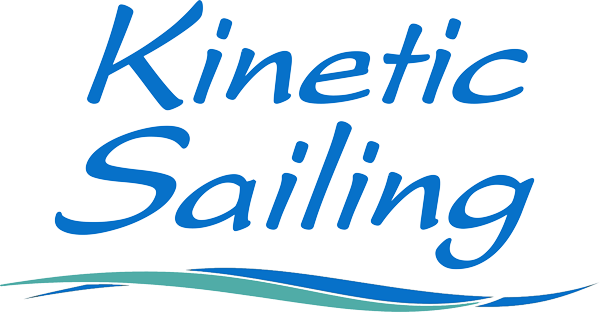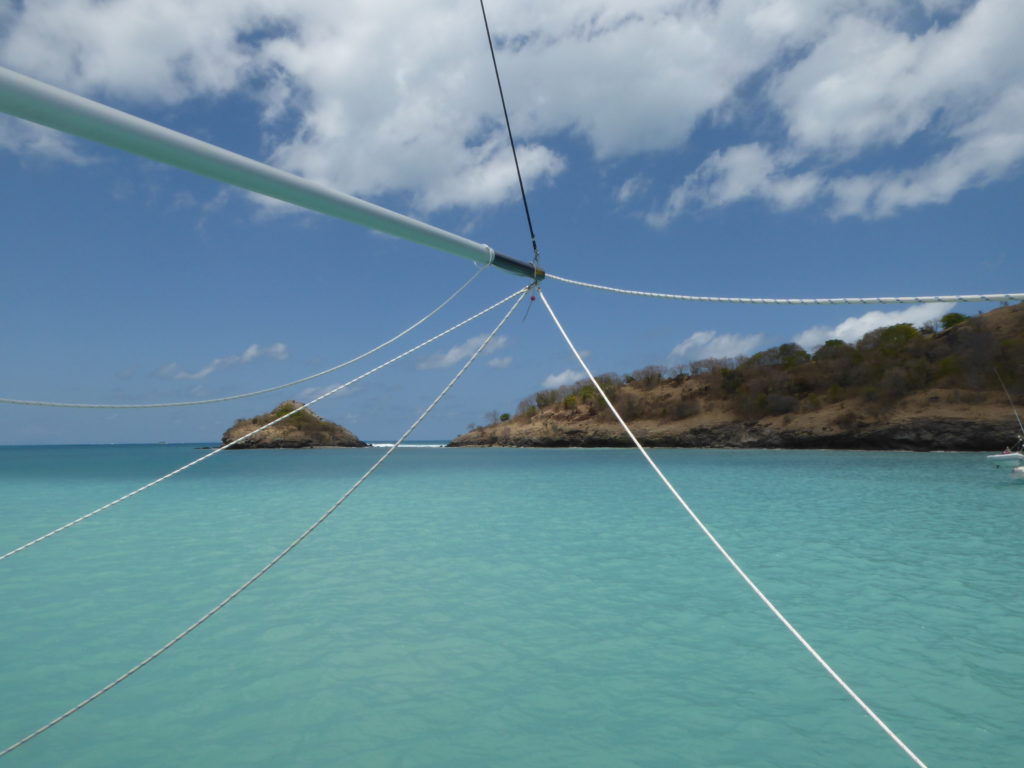Most of our passages this season have been to windward, despite our best planning. Any downwind legs have been with strong winds; plenty to keep the main and headsails full. Winter tradewinds have generally run from the East Northeast to East, but as Easter approaches we’re seeing more Southeasterly trades. As we look ahead to our return passages – from the Leeward Islands to USVI, and then USVI to the Chesapeake – we anticipate quite a bit of a downwind sailing, and want to be well prepared.
Our Outbound 46 Kinetic features jibe preventer lines running from the back of the boom (port and starboard) to a blocks on the bow, and then back to the stern cleats – so that jibes can be fully controlled from the cockpit. We also invested in a Forespar cruising whisker pole to “pole out” the jib or genoa on downwind runs. This arrangement allows us to sail wing on wing securely for long distances without fear of accidentally gybing. The pole is stored on the forward face of the mast, one end is fixed and travels vertically on a mast-mounted track. The pole position is adjusted and stabilized by triangulating it with a topping lift, afterguy, and foreguy. The foredeck crew adjusts the car height, topping lift and pole extension, while the cockpit crew controls the foreguy, afterguy, and sheet. When set, the pole is parallel to the deck, about 7’ high, and is angled to form a straight line with the mainsail’s boom. This position maximizes the surface area of the sails presented to the wind, for best downwind performance.
With the exception of a few practice runs and some downwind time off the Delmarva coast last summer, we’ve barely had a chance to use the whisker pole. Today we took advantage of a layday anchored in Deep Bay, Antigua, to practice pole sets, jibes and securing. To avoid excess “spaghetti” on deck, our “lazy” boom preventer line becomes the active foreguy, so jibing both main and pole involves some careful orchestration. Five hours well-spent, as we worked through the process, marked halyards and car positions, and documented the procedures in photos and written steps. Repeat, repeat, repeat, and then again, swapping crew positions. Our anchorage neighbors probably thought we were nuts, but practice makes perfect! Or at least, safe and efficient. Now to try it on a rolling deck, with the headsail, and a dinghy stored on the foredeck.
When we return to the Chesapeake Bay in mid-May, we look forward to receiving our new cruising spinnaker, and a whole new level of downwind sailing… and training!


